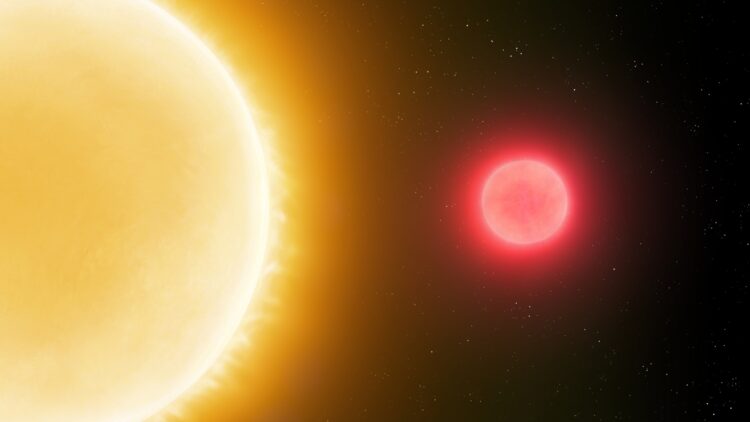There is plenty beyond out solar system that we cannot even begin to comprehend. Most of the assumptions and knowledge that we have about space has been extrapolated from our little corner, but there is still a lot that we do not know and we are proven wrong time and time again every time we make a new discovery. One of the latest and most fascinating discoveries has to do with a giant planet circling a pint-sized red dwarf star that is only about 20% the size of our Sun. This is not just strange, but it is challenging everything we know about how planets are formed.
Both of the celestial bodies involved in the story are oddities that astronomers have not encountered before. The star, named TOI-6894 is just 23% the Sun’s radius and 21% of its mass, and the planet is a gas giant roughly the size of Saturn, officially named TOI-6894b. This combination makes it the smallest star we know of to have such a massive planet in its orbit.
Edward Bryant, an astrophysicist from the University of Warwick who led the research team gushed about the discovery and what it means for our understanding of the universe “I was very excited by this discovery. We did not expect planets like TOI-6894b to be able to form around stars this low-mass. This discovery will be a cornerstone for understanding the extremes of giant planet formation.”
How is the relationship between this dwarf star and this giant planet possible?
The first thing to know is that stars are born from collapsing clumps of gas and dust in space, and as those clump spin and form a protostar, it is then surrounded by a disk of leftover material. That disk not only feeds the growing star but also becomes the birthplace of planets. The amount of leftover material is tied to how big the star is, and smaller stars like red dwarfs just should not have enough raw material to make big planets, but that does not always work and this is not the only case of a small star with a big planet attached to it.
Although Bryant and his team had to dig deep to find others. They turned to TESS, NASA’s Transiting Exoplanet Survey Satellite to sift through data from over 91,000 red dwarf stars, hoping to find more of these unexpected planetary giants and eventually they found some.
“I originally searched through TESS observations of more than 91,000 low-mass red-dwarf stars looking for giant planets,” says Bryant. “Then, using observations taken with one of the world’s largest telescopes, ESO’s VLT, I discovered TOI-6894b, a giant planet transiting the lowest mass star known to date to host such a planet.”
The researchers figured out the star is around 320,000 kilometers across, while the planet clocks in at about 120,000 kilometers wide and follow-up measurements also revealed that TOI-6894b has just 17% the mass of Jupiter, suggesting it has a low-density, puffy atmosphere, which makes it an ideal target for atmospheric studies.
A team has already requested time on the James Webb Space Telescope (JWST) to take a closer look. Andrés Jordán from the Millennium Institute of Astrophysics in Chile is looking forward to that since “This system provides a new challenge for models of planet formation, and it offers a very interesting target for follow-up observations to characterize its atmosphere.”
There are already a couple of leading theories on how gas giants form, one is the slow and steady build-up of material, and the other is a more sudden collapse of dense regions in the disk, but neither seems to fully explain how something like TOI-6894b came to be.
“It’s an intriguing discovery. We don’t really understand how a star with so little mass can form such a massive planet!” says Vincent Van Eylen of University College London. “This is one of the goals of the search for more exoplanets. By finding planetary systems different from our Solar System, we can test our models and better understand how our own Solar System formed.”

